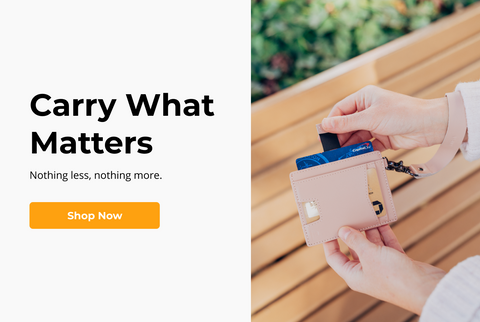In the world of leather, it almost seems like there is an endless stream of information to be had and types of leather to be discovered. Each variety of tanned animal hide has its own unique qualities, advantageous offerings, and disadvantageous deficiencies.
Each lends itself to a different purpose and thus can be the perfect purchase for someone and not for another. It all depends on what you’re looking for.
With leather, there are a lot of variables. First, there are different tanning processes, like vegetable versus chromium tanning, or the later perfected Nappa tanning process. Similarly, different types of leather depend on the method of tanning and the finishing process afterward.
This is what gives rise to the very soft texture of Nappa leather. Think of suede, which is a cut of hide that is later flipped over and processed to reveal a thin and extremely mutable cut of hide.

There are faux leathers, the imitation products which offer incredible stain resistance, and, surprisingly, look very much like genuine leather. Bonded leather even smells like authentic hide, because it blends true leather fibers with a polymer, thus retaining the smell and look of real leather, without being as expensive.
But before these steps, there is the cut of hide that is first being used. What is often called “genuine” leather is nothing more than a collection of different pieces of leather that have been grouped together either by stitching or sewing, and then painted over.
This allows the product to be called “genuine” leather, because, in fact, it is; but at the same time it isn’t nearly the highest quality of leather cut available.
Let’s Dive Into Top Grain Leather vs. Full Grain Leather
At the top of the list is top-grain and full-grain leather. Each has its own distinct set of properties. We are going to put them head to head and intricately break down their advantages and disadvantages, highlights and lowlights, so you can make a comprehensively informed decision when purchasing your next leather good.
So, where do we start? What even is top-grain leather? Full-grain leather? And how much of a difference can there really be?
Top-Grain Leather: What You Need To Know
Top-grain leather is a grade of leather, meaning it is one of a few different splits of leather that has had its surface treated in a particular way. Top-grain leather is from the top of the hide, like full-grain leather. So in this way, it is one of the highest qualities of leather.
What distinguishes top-grain from full-grain leather is that top-grain leather has undergone a process of sanding to remove the natural imperfections and blemishes of full-grain leather. Tanners will sand the top layer so it will be more visually appealing, and it does look stunning.
However, the aesthetic appeal is purchased at the cost of durability. Top-grain leather looks beautiful and is softer than full-grain leather because it’s been sanded. But top-grain is weaker than full-grain leather, and because the topmost layer has been removed, top-grain leather loses a lot of its water repellent qualities.
To achieve a luxurious softness and unique uniformity, top-grain leather pays in its lack of durability and resilience to the elements.
What about full-grain leather then? What is it like in comparison?
Full-Grain Leather: What You Need To Know
Full-grain leather is, like top-grain, the topmost part of the hide. Unlike top-grain, however, full-grain leather retains the full grain of the leather, meaning that none of it has been sanded away like in top-grain.
With full-grain leather, the only part of the hide that is removed is the hair––the rest stays completely intact. This means that the full-grain leather will have naturally occurring imperfections and irregularities. But it also means that the densely packed fibers of the hide haven’t been removed, giving the leather incredible durability and strength.
Full-grain leather is known for its water resistance and its durability, making it a perfect choice for many items that don’t need to look perfect like top-grain items. And full-grain leather develops a rich patina with use, so the leather looks increasingly elegant and unique as you use it.
Full-grain leather is intended for products that will travel with you and be used frequently. For most, due to its distinguished durability and a rich patina, full-grain is seen as the highest quality of leather available.
Of course, this means that full-grain leather is more expensive than top-grain leather because of its quality. So if you’re looking for a thinner, more workable, and cheaper alternative, then top-grain is a perfect option.
Taking Care of Your Top-Grain and Full-Grain Leather
All leather products, if they are made from full or top-grain leather, need to be properly cared for in order to retain their unique qualities. At the end of the day, there are no differences between taking care of top-grain and full-grain leather, since they are both high-quality genuine leathers.
Be sure to keep your leather in an area that isn’t too hot and isn’t exposed to direct sunlight. Your leather can dry out and end up cracking if not stored properly. Also, keep your leather away from damp or humid places.
Keeping your leather item in a place that doesn’t regulate humidity well, or is near a significant amount of moisture can cause the fibers of your leather to break down and let mold take over. No one wants a moldy wallet.
Both top-grain and full-grain leather products have that trademark leather smell that the hides are invested in after the tanning and dyeing processes. Leather is partly attractive because of that smell, and it makes sense why we’d miss it if it disappeared.
To avoid the deterioration of leather’s lovely scent, store your leather item in a newspaper. Newspaper is especially porous and absorbs the smells it encounters. So start storing your leather product in a newspaper, and when the smell begins to fade, wrap it in the newspaper and leave it for a day or two and it will regain its smell.
The benefit of top-grain and full-grain leather products is their aesthetic. Top-grain leather may look more uniform and perfect, but as we mentioned full-grain leather has the advantage of a rich naturally occurring patina that grows with you as you use it and carry it every day.
The oils of your skin accentuate the hue it develops over time, and to protect the surface of your full-grain leather product, it’s important to condition your leather regularly.
Protect Your Leather
Our Leather Cream is made from a carefully chosen mix of natural ingredients, including triple filtered beeswax, a combination of seed oils, and naturally occurring lipids. These natural ingredients serve to protect your Andar leather product and to keep it looking pristine.
Our handmade conditioner restores the leather’s organic integrity, waterproofs its surface, and protects it from unnecessary cracks and blemishes. Before each product leaves our warehouse we apply our leather cream to each product, and it’s important to begin a routine of conditioning your leather consistently afterward.
Top-Grain vs. Full-Grain Leather: The Final Result
So you wanted to know the difference between top-grain and full-grain leather. Out of every available cut of leather, top-grain and full-grain are the two most similar. They share a lot of commonalities between them, not least the fact that they are almost identical pieces of leather.
Both cuts of leather are sourced from the top-most part of the hide, be it cowhide, pigskin, sheepskin, or goat hide. Genuine leather differs from both of them because it can be from any part of the hide, and in fact, can be many different cuts from many different hides all stitched together to look like one piece, then painted over to give a cosmetic unity.
In the world of leatherworking, it is more important to be, rather than to appear to be. And top-grain and full-grain leather offer high-quality options. The fundamental difference is what happens as the topmost cut of the hide is tanned.
With full-grain leather, the hide remains the same from the time it’s cut to the time it’s tanned. Because of this, you can find naturally occurring irregularities and imperfections in the hide, because the only thing that is removed is the hair.
With top-grain leather, the surface is sanded down to remove these imperfections, giving top-grain leather a more uniform look. Additionally, it is thinner and therefore more workable, making it a great choice for products that demand a more mutable material.
But at the price of uniformity and thinness, durability is sacrificed. Top-grain leather doesn’t last as long as full-grain leather and likewise doesn’t develop full-grain leather’s rich patina which it gains through aging.
Sources:
Full Grain Leather vs Top Grain Leather: What are the Differences | BBD Lifestyle
Full Grain | Definition of Full Grain | Merriam-Webster
Top Grain| Leather Dictionary
Junyuan Bags | Professional Bag Manufacturer
Ten articles before and after
Is Leather Waterproof? Our Complete Guide On Leather and Water – Junyuan Bags
How to Choose the Best Leather Wallets for Women – Junyuan Bags
Where To Find Your MacBook Pro Model Number and Why You Might Need To – Junyuan Bags
AirPods Accessories For 2021 You Should Check Out Now – Junyuan Bags
EDC Loadout: How To Build Your Best Everyday Carry Gear List – Junyuan Bags
What Is Suede, Is It Leather, and How Is It Different? – Junyuan Bags
Why Do Dogs Eat Leather Wallets (and What Can You Do About It?) – Junyuan Bags
What Is PU Leather? A Head to Head Comparison With Full Grain Leather – Junyuan Bags
The RFID Blocking Card: Here’s What You Need to Know – Junyuan Bags
What Is Bonded Leather: The Most Important Things To Know – Junyuan Bags




 Mobile/What's App/Wechat
Mobile/What's App/Wechat E-Mail
E-Mail ADD
ADD




